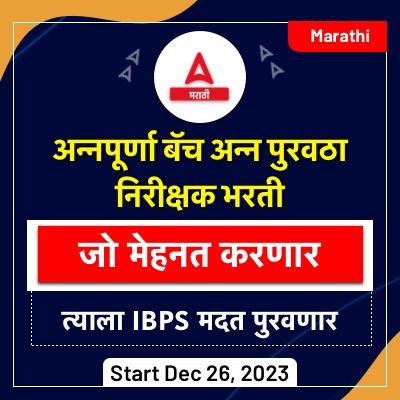Health regulations need a base to top approach
(The Hindu, 07/06/24)
A devastating fire in a private neonatal care nursing home in New Delhi in late May led to loss of lives and intense media scrutiny.
What are the challenges with healthcare regulations in India?
- There are multiple regulations across different states, making it complex for providers to comply.
- Overly complex regulations burden healthcare providers, especially smaller facilities.
- Some States have over 50 approvals under multiple regulations, which need to be followed and complied with by every health-care facility.
- Unrealistic quality standards are difficult to implement.
- Indian Public Health Standards, or IPHS, were first released in 2007 and have been revised twice since then. Yet, in 17 years of existence, only 15% to 18% of government primary health-care facilities in India meet the government’s own standards.
- Regulations unfairly target private facilities compared to government-run ones.
- Slow approval processes hinder operations.
- The regulations around digital healthcare and data protection are not well-defined.
- The current system might prioritize penalties over measures that encourage improvement in safety and quality standards. This creates a fear environment that creates challenges for doctors to render their services in seamless manner.
What are some suggestions for improving healthcare regulations?
- Simplify regulations and make them achievable.
- Involve stakeholders (healthcare professionals, communities) in crafting regulations.
- Implement a tiered system with different standards for various facility sizes.
- Subsidize smaller facilities to improve safety and quality.
- Promote primary care providers for cost-effective care
Can you answer the following question?
Discuss the challenges in implementing effective healthcare regulations and suggest a framework for making them more efficient and accountable.
White Phosphorus
A global human rights group has claimed that Israel used white phosphorus incendiary shells on homes in at least five towns and villages in conflict-affected southern Lebanon.
- Israel claims it uses white phosphorus only as a smokescreen, not to target civilians.
What is White Phosphorus?
- White phosphorus is a form of the chemical element phosphorus.
- It’s a waxy solid, typically appearing white, yellow, or translucent.
- White phosphorus is a pyrophoric that ignites when exposed to oxygen, producing thick, light smoke as well as intense 815-degree Celsius heat.
- Pyrophoric substances are those which ignite spontaneously or very quickly (under five minutes) when in contact with air.
- White phosphorus emits a distinct garlic-like or match-stick like odour.
What are its applications?
- Military: White phosphorus is used in various military applications due to its flammability, including:
- Incendiary weapons: It can cause burns and fires upon contact.
- Smoke grenades: It produces a thick white smoke for cover or signaling.
- Tracer ammunition: It creates a glowing trail to track bullet trajectory.
- Industry: It has some industrial applications such as:
- Manufacturing matches and fireworks (historically)
- Production of phosphoric acid and other chemicals
What are the harmful effects of white phosphorus?
- Upon exposure, white phosphorus can cause severe burns, often down to the bone. The burns are excruciatingly painful, difficult to heal, and susceptible to infections.
- Particles of white phosphorus that remain lodged the body can reignite if in contact with air.
- Inhaling white phosphorus particles or smoke can cause respiratory damage and harm to internal organs.
- Those who survive initial injuries often experience a lifetime of suffering — with impaired mobility and painful, horrific scars.
- White phosphorus can also devastate infrastructure and property, damage crops and kill livestock, with raging fires, especially in windy conditions.
What is the Legal status of white phosphorus munitions?
- White phosphorus munitions are not under a blanket ban, though their use is regulated under the International Humanitarian Laws.
- Not considered a chemical weapon
- It is not considered a chemical weapon because its operational utility is primarily due to heat and smoke, rather than toxicity. Thus, its use is governed by the Convention on Conventional Weapons (CCW), specifically Protocol III, which deals with incendiary weapons.
- Incendiary weapons are weapons that use fire and heat to set fire to objects or cause burn or respiratory injury to people
- Palestine and Lebanon have joined Protocol III, while Israel has not ratified the protocol.
- Protocol III of CCW regulates the use of incendiary weapons
- Protocol III prohibits the use of airdropped incendiary weapons in concentrations of civilians. However, it has two significant loopholes.
- First, it restricts some but not all use of ground-launched incendiary weapons where there are concentrations of civilians.
- Second, the protocol’s definition of incendiary weapons covers weapons that are primarily designed to set fire to and burn people.
- It excludes multipurpose munitions such as those containing white phosphorus, which are considered to primarily be “smoking” agents.
महाराष्ट्रातील सर्व स्पर्धा परीक्षांसाठी ऑनलाईन क्लास, व्हिडिओ कोर्स, टेस्ट सिरीज, पुस्तके आणि इतर अभ्यास साहित्य खाली दिलेल्या लिंक वर क्लिक करून मिळवा.
अड्डा 247 मराठीचे युट्युब चॅनल
अड्डा 247 मराठी अँप | अड्डा 247 मराठी टेलिग्राम ग्रुप










